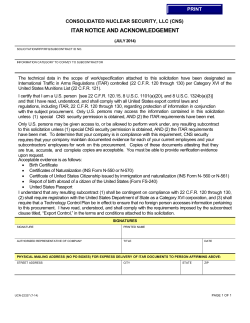
Document 107950
drug Organ Atropine CNS (Hyoscyamine) Uses Drugs organ Uses Pre-anesthetic medication, Antispasmodic, cardiac arrest Benztropine CNS Parkinson's disease Scopolamine (Hyoscine) Pre-anesthetic medication, Motion sickness, antispasmodic Homatropine & Tropicamide Eye Fundus examination of eye Ipratropium Resp. sys asthma, COPD, inhalation Pirenzepine Glycopyrrolate & Buscopan Stomach GIT Peptic ulcer Antispasmodics in hypermotility Oxybutynin & Imipramine GUT Urinary urgency, Urinary incontinence CNS Esters of tropic acid and tertiary amines Lipid soluble Good oral absorption Good distribution Notes that for any lipid soluble it has these 3 characteristic Cross blood brain barrier (have CNS actions) Pharmacological effects of atropine: CNS CVS Eye 1- Sedation 2- Antiemetic effect (block vomiting center) 3- antiparkinsonian effect (block basal ganglia). 1- Tachycardia (increase in heart rate) 2- AV conduction ( + ve dromotropic effect) Therapeutic dose: Vasodilatation induced by cholinomimetics. Toxic dose: Toxic dose: Cutaneous vasodilatation (atropine flush). 1- Passive mydriasis Due to paralysis of circular muscle 2- Cycloplegia (loss of near accommodation) due to paralysis of ciliary muscle. 3- Loss of light reflex. 4- increase I.O.P thus, worsen glaucoma. 5- Lacrimal secretion sandy eye Hyperthermia – excitement hallucination. Respiratory system 1- Relaxation of bronchial muscles (bronchodilator) 2- Bronchial secretion viscosity Secretions GIT Urinary tract Salivary secretion ( Dry mouth ). Sweating Dry skin Fever in infants and children. Bronchial secretion Viscosity Lacrimal secretion Sandy eye gastric Acid (used for Peptic Ulcer ) 1- Relaxation of smooth muscles. 2- GIT motility Antispasmodic effect. 3- Sphincter contractions 4- Constipation 1- Relaxation of smooth muscles of urinary bladder. 2- Sphincter contraction. 3- Urinary retention. Adverse effect of antimuscarinics organ Contraindication Blurred vision – Mydriasis Eye Glucoma Tachycardia - Atropine flush Urinary retention Constipation, paralytic ileus CVS GUT GIT Dryness of mouth , Sandy eye Increased body temperature. Secretion Tachycardia Prostate hypertrophy in old patients Constipation, paralytic ileus, intestinal obstruction ----- Sedation, hallucination, excitation (Toxic dose). CNS Children - in case of atropine - Treatment of atropine-like toxicity: • • • Antidote Gastric lavage. Anticonvulsant. Cooling blanket. Physostigmine ( iv slowly ). In comparison to atropine , Scopolamine (Hyoscine) : - Has shorter duration of action Has more CNS depressant action Antiemetics action in motion sickness Can produce amnesia. ( blocking short-term memory ) Less CVS effect Produces sedation , but in higher doses it can produce excitation Remember - Antimuscarinics are parasympatholytics ( opposite of muscarinic effects ) - Antimuscarinics are reversible competitive blockade of muscarinic receptor. - Atropine is a prototype , it has high affinity for muscarinic receptors . Atropine acts both centrally and peripherally, and blocks all muscarinic receptors. Atropine used as an antidote for cholinergic agonist ( agonist treats antagonist and vice versa ) Tertiary amines are lipid soluble & have CNS effect . Quaternary amines are water soluble , thus has no CNS effect. Ipratropium open up airways and reduce mucous production in patients suffering from asthma Any drug has wider effect usually not clinically used ..ابمتوفيق مجي ًعا )": وهذآ امعمل جمرد ملخص وميس مرجع دغوة بظهر امغيب تكفي غن جزيل امشكر..مهسة
© Copyright 2025





















